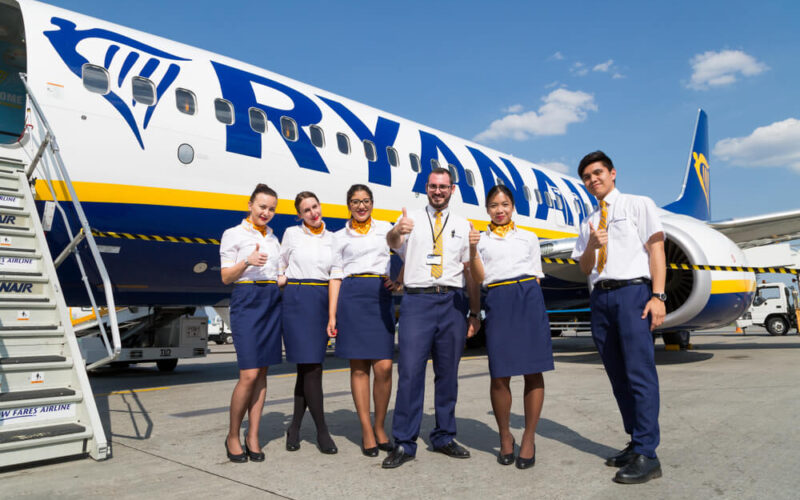Europe’s favorite airline, as Ryanair calls itself, has presented its H1 FY2020 financial results, including a slight dip in operating profit. The low-cost carrier has provided an update on 737 MAX deliveries and revised growth guidance in FY2021, as the aforementioned Boeing narrow-bodies are yet to be approved by regulators worldwide and have put pressure on the airline’s growth perspective.
Amidst a growth in passenger traffic (up by 8%) compared to the same period last year, Ryanair’s revenues have grown by 11% to $5.9 billion (€5.3 billion), yet growing costs, which equated to $4.5 billion (€4.1 billion; up by 16%), put pressure on the operating profit, which decreased by 1% to $1.42 billion (€1.28 billion). Nevertheless, adding in other expenses, the net profit in H1 FY2020 has come out at $1.2 billion (€1.1 billion), equaling the total profit in H1 FY2019.
However, the 737 MAX groundings have put a delay on Ryanair’s planned growth in FY2021. Instead of receiving its first MAX in Q2 2019, the low-cost carrier expects the first delivery to come in March 2020 at the earliest – a date still pending approval by the European Union Aviation Safety Agency (EASA). Thus, Ryanair expects to grow only by 3% in Summer 2020, instead of 7%, which translates to 157 million passengers in FY2021 instead of 162 million.
Ryanair’s profit guidance
The Ireland-based carrier expects to finish FY2020 with around $892 million or $1 billion (€800-€900 million) of profit. Ryanair is staying cautious, as the guidance depends on “close in H2 fares, Brexit and the absence of any security events”. The full-year profit guidance is lower than the Profit after Tax (PAT) achieved in FY2019 when it posted a $1.1 billion (€1.02 billion) PAT.
The airline expects to achieve such results despite falling fares and delays to the 737 MAX – while the former is offset by increasing ancillary revenues (up by 16% per passenger in H1 FY2020) the latter will result in the closure of five bases in the Winter season: Belfast, Northern Ireland (BFS), Girona, Spain (GIR), Gran Canaria, Spain (LPA), Hamburg, Germany (HAM), Lanzarote, Spain (ACE) and Tenerife, Spain (TFS). As a result of the cuts, Summer 2020 capacity will stay flat, according to the airline’s presentation.
The relationship between Ryanair and its employees remains tense. – While Chief Executive Officer of the airline, Michael O’Leary, has noted that the carrier has union agreements in all major markets and the airline is negotiating with cabin crew and pilot unions in Spain, Ryanair’s flight crews were striking during August and September in 2019.
However, O’Leary has called the strikes “abject failures”, as most of the pilots and cabin crew “recognized the difficult environment” the airline industry is currently facing.
Still, the company is an “attractive employer”, as Ryanair has “high pay and industry-leading rosters”, according to the group’s CEO.
Commenting on environmental taxes imposed upon aviation, O’Leary called them “a tax on poor people, as they are regressive, they militate towards people from periphery of Europe that are traveling across Europe”, explaining that while in such countries as Belgium and the Netherlands people can choose other means of travel, passengers from island nations like Ireland, Malta or Cyprus “do not have an alternative – you must fly,” said O’Leary.

